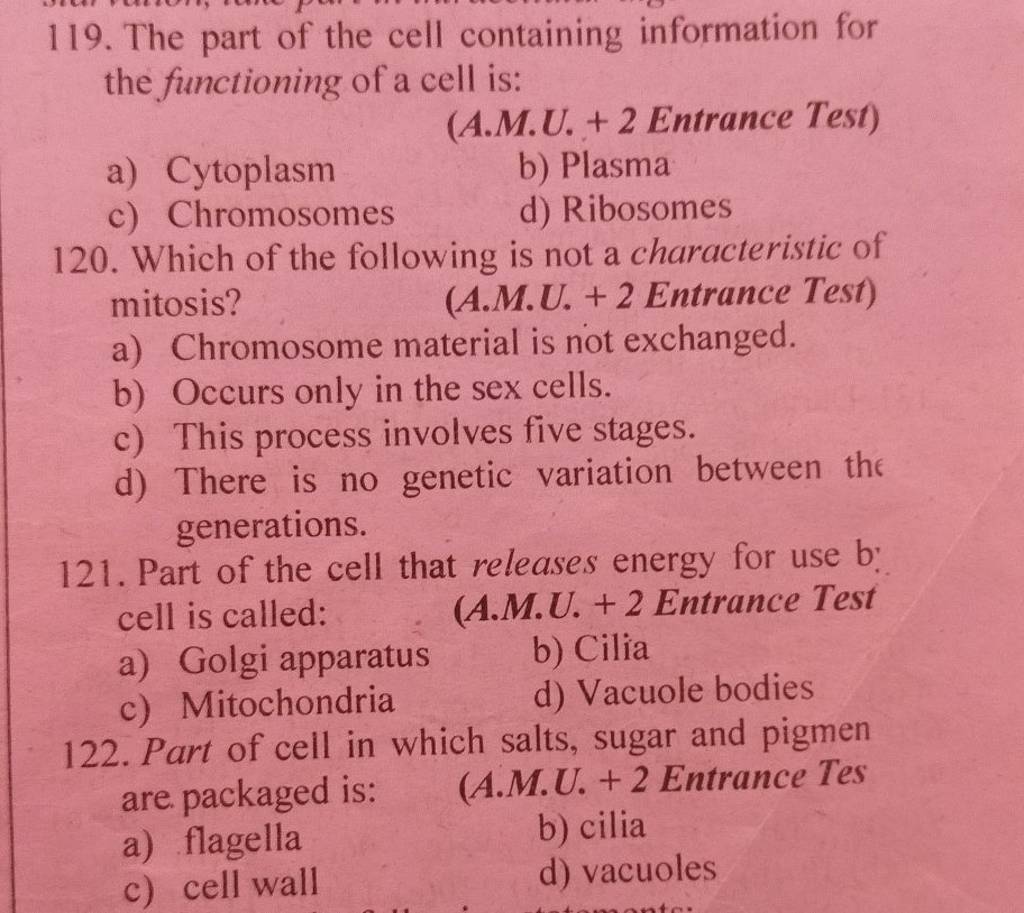Question
Question asked by Filo student

The part of the cell containing information for the functioning of a cell is: (A.M.U. Entrance Test)
- Cytoplasm
- Plasma
- Chromosomes
- Ribosomes
Found 5 tutors discussing this question
Discuss this question LIVE
6 mins ago
Filo tutor solution
Learn from their 1-to-1 discussion with Filo tutors.

Generate FREE solution for this question from our expert tutors in next 60 seconds
Don't let anything interrupt your homework or exam prep with world’s only instant-tutoring, available 24x7
Practice more questions on Cell: Structure and Functions
Question 1
Hard
Views: 5,489
Question 3
Medium
Views: 6,101
Students who ask this question also asked
Question 1
Views: 5,281
Question 3
Views: 5,307
| Question Text | The part of the cell containing information for the functioning of a cell is: (A.M.U. Entrance Test) |
| Topic | Cell: Structure and Functions |
| Subject | Biology |
| Class | Class 11 |



